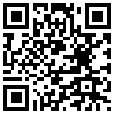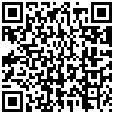Details
Download Docx
Read More
Let us continue with selections from the fifth and sixth prapâthaka in the Maitrâyana-Brâhmana- Upanishad from the book “The Upanishads,” translated by Max Müller. “In the beginning, darkness (tamas) alone was this. It was in the Highest, and, moved by the Highest, it becomes uneven. Thus, it becomes obscurity (ragas). Then this obscurity, being moved, becomes uneven. Thus, it becomes goodness (sattva). Then this goodness, being moved, the essence flowed forth. This is that part (or state of Self) which is entirely intelligent, reflected in man (as the Sun is in different vessels of water), knowing the body (kshetragña), attested by his conceiving, willing, and believing, it is Pragâpati, called Visva. […]”“He (the Self) bears the Self in two ways, as he who is Prâna (breath), and as he who is Âditya (the Sun). Therefore, there are two paths for him, within and without, and they both turn back in a day and night. The Sun is the outer Self, the inner Self is Breath. Hence, the motion of the inner Self is inferred from the motion of the outer Self. For thus it is said: ‘He who knows, and has thrown off all evil, the overseer of the senses, the pure-minded, firmly grounded (in the Self) and looking away (from all earthly objects), he is the same.’ […]There are two forms of Brahman, the material (effect) and the immaterial (cause). The material is false, the immaterial is true. That which is true is Brahman, that which is Brahman is Light, and that which is Light is the Sun. And this Sun became the Self of that Om. He divided himself threefold, for Om consists of three letters, a + u + m. Through them all this is contained in him as warp and woof. For thus it is said: ‘Meditate on that Sun as Om, join your Self (the breath) with the (Self of the) Sun.’ […]And it is also said: ‘The three-footed Brahman has its root upward, the branches are ether, wind, fire, water, earth, et cetera. This one, Asvattha by name, the world, is Brahman, and of it that is the light which is called the Sun, and it is also the light of that syllable Om. Therefore, let him forever worship that (Breath and Sun, as manifestations of Brahman) with the syllable Om.’ He alone enlightens us. For thus it is said: ‘This alone is the pure syllable, this alone is the highest syllable; he who knows that syllable only, whatever he desires, is his.’ And thus it has been said elsewhere: This Om is the sound-endowed body of him (Prânâdityâtman). This is his gender-endowed body, namely feminine, masculine, neuter. This is his light-endowed body, namely Agni, Vâyu, Âditya. […]”














